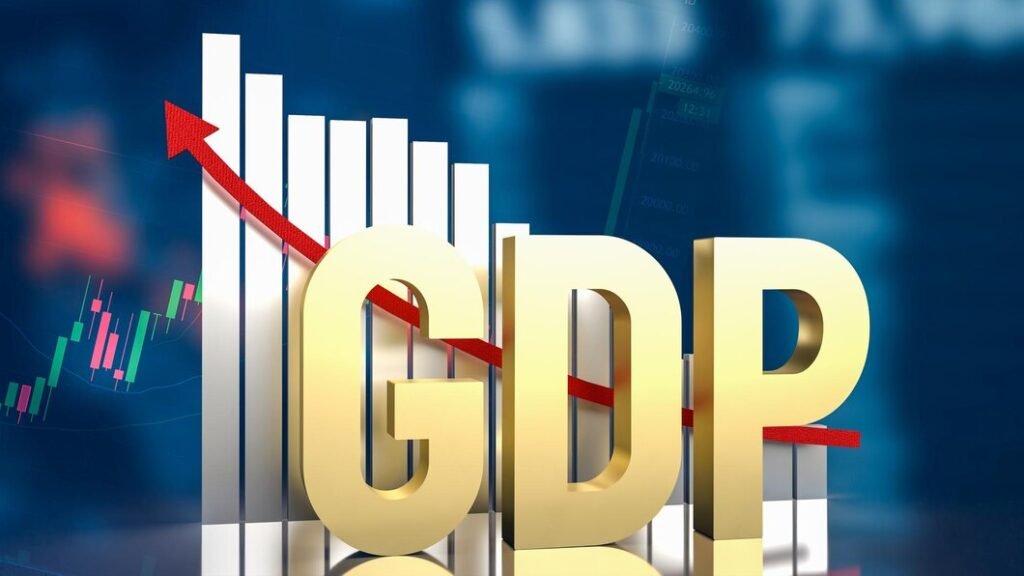INDIAN ECONOMIC
Economics studies the economic activities of humans. All those activities carried out by humans in which there is an element of economic profit or loss are called economic activities.
Economy is an incomplete word if the name of any country or any particular region is not added before it. In fact, when we define a country in terms of all its economic activities, it is called economy. Economic activity is related to the use of scarce resources, consumption, production and distribution of goods and services by the business sector, domestic sector and government of a country.
Definition of economy: Low, middle and high income. According to the
Sectors of Economy:
All those human activities which help in income generation have been termed as economic activities. Economic activity is related to the use of scarce resources, consumption, production and distribution of goods and services by the business sector, domestic sector and government of a country. The economic activities of the economy are divided into three categories, which are called sectors of the economy.
1.Primary Sector: This sector of the economy directly affects the environment
It depends on. These activities are related to natural resources like land, water, vegetation and minerals. Agriculture, animal husbandry, fisheries, mining and their allied activities are kept under this. The nature of labor involved is indicated through red collar job.
2.Secondary Sector: That sector of the economy which is dependent on the primary sector.
The products which are used as raw materials in their activities are called secondary sector. Such as: iron-steel industry, textile industry, vehicles, electronics etc. In fact, manufacturing work takes place in this area, that is why it is also called industrial area. The skilled workers engaged in this are placed under white collar job, while the workers directly engaged in the production process are placed under blue collar job.
3.Tertiary Sector: Various types of services are produced in this sector; Like insurance, banking, medical, education, tourism etc. This sector is also known as service sector. > The tertiary sector contributes the most to the Gross National Product of the Indian economy.
Note: Indian economy is a labour-intensive econom
National income
Cost of National Income The income of an economy i.e. the value of its total produced goods and services can be calculated either on factor cost (FC) or on market cost (Market Price-MP).
Factor Cost: This is basically the investment cost which the producer incurs during the production process. Such as cost of capital, interest on loans, raw materials, Labour, rent, electricity etc. That is, the entire value of productive factors consumed or used in the production of any good or service is called Factor Cost. Producers of these goods and services estimate the cost of these factors during production, after which the price of that good or service is determined.
Market Price: Market cost is the price that a consumer pays to a seller while purchasing a good or service. Market cost is arrived at after adding indirect taxes (Cenvat, Central Excise, CST etc.) on the factor cost of goods and services. That is, to arrive at the market price, the taxes paid to the government are included in the factor cost, whereas the subsidy given by the government is deducted from the factor cost because it is calculated at the time of determining the factor cost.
NATIONAL INCOME AT CURRENT AND CONSTANT PRICE
National Income at Current Prices: When national income is measured at prevailing market prices, it is called national income at current prices. National income at current prices is also called monetary.
2.National Income at Constant Prices: National Income at Constant Prices It means the monetary value of all final goods and services produced by the ordinary citizens of a nation during an accounting year, measured at the prices of a base year. This is called real national income. The true indicator of economic development of a country is national income at constant prices.
The following are not included in the national income of any country – 1. The value of intermediate goods. 2. The value of old items. 3. Domestic services or work. 4. Buying and selling of financial assets like shares, debentures etc. 5. Transfer payments (pension, stipend, lottery winnings) 16. Gifts received from abroad.
To calculate national income, both product method and input method are used.
*Product Method: Under this, the net value addition of goods and services is assessed. It is used in agriculture, forestry, animal husbandry, mining and industry sectors. This is also known as value added method.
Income method: Under this, payments made for factors of production are summed up and used to estimate GDP of service providers like transportation, administration and trade.
Indian economy is a mixed economy.
First capitalist second imperialist third mixed economy.

1. Capitalist Economic
It is called a capitalist economy in which everything is private, everything is private here. In this, all the four factors of production like capital, land, labor and entrepreneurs are all private, like
Imperialist economic
Imperialist system is called that in which all the four factors of production – land, labour, respected entrepreneurs – will belong to the government, due to which railways, banks, government schools etc.


Mixed Economic
In a mixed economy, both the government and our own business can do business in it. This is the economy in our country.

Gross Domestic Product-GDP
The collection received by Indian people from other countries inside or outside any country is called national income. I of the country of origin plus I of Indian persons living abroad. Whenever GDP is less than NDP, we are getting labor from abroad. Foreign countries are earning more than our country.
Resident producers located within the domestic borders of a country and The final monetary value of all goods and services produced by non-resident producing units in a year is called Gross Domestic Product. In other words, we can say that the gross value added by all the entrepreneurs, whether resident or non-resident, within the domestic border of a country in an accounting year is called Gross Domestic Product. It is also assessed by the sum of national and private consumption, gross investment, government and trade balances.
Uses of Gross Domestic Product (GDP):
1. G.D.P. The annual percentage change in GDP is the growth rate of an economy.
2. It is a quantitative approach. Its size reveals the internal strength of the country but it does not reveal the quality of products and services.
3. Comparative analysis of member countries is done on this basis by the International Monetary Fund and the World Bank. Gross Domestic Product at Factor Cost
Product at Factor Cost-GDP FC): The entire value of productive factors consumed or used in the production of a good or service is called Factor Cost. Taxes paid to the government are not included in the factor cost because it is not directly involved in the production process but if any subsidy is received then it is included in the factors cost.

Gross National Product at factor cost (GNP FC)
A country’s GNP is its national income plus money earned abroad.
A country’s GNP is its national income plus money earned abroad.Gross National Product at factor cost means that national product whose value is determined on the basis of income received from the factors used in the production process. Under factor cost, we include employees’ remuneration, interest, corporate profit, loss etc.
Gross National Product at Market Price (GNP MP): The market value of all final goods and services produced by resident productive units within and outside the economic border during a year is the Gross National Product at market price. Is called. When we add indirect trade taxes to the Gross National Product at Factor Cost (GNPFC) and subtract the subsidies given by the government, we get the market price.
GDP FC = GNP MP- Indirect Taxes + Grants
Various uses of GNP
1. The International Monetary Fund (IMF) decides the ranking of the countries of the world on the basis of gross national income. On this basis, IMF ranks the countries on the basis of their Purchasing Power Parity (PPP).
Note: In 2015-16 AD, on the basis of Purchasing Power Parity (PPP), IMF has declared India as the third largest economy in the world. On this basis, China is first and USA. Is the second largest economy. (Based on the exchange rate of Indian currency, India is the sixth largest economy in the world.)
2. GNP is a broader measure than GDP to measure national income because it presents a quantitative as well as a qualitative picture of the economy.
3. It also throws light on the relationship of any economy with other economies of the world. This is reflected in the loans taken from other countries and loans given to other countries.
4. It tells how dependent the outside world is on a particular product of a country and how dependent that product is on the countries of the world
Net National Product (NNP):
The income that remains after deducting price cuts from the Gross National Product is called Net National Product (NNP) of an economy.
NNP-GNP-Mosquito
or NNP – GDP + Income from abroad – Price cut
Various uses of NNP
1. It is the National Income (NI) of any economy.
2. It is the best way to estimate the income of any country.
3. When NNP is divided by the total population of the country, it gives the per capita income of that country. This is the per capita annual income.
Taxes, Subsidies and National Income: The formula for estimating the national income of India by putting indirect taxes and subsidies together is-
National Income at Factor Cost – NNP MP-Indirect Taxes + Grants
declaration
I hope that the information given by me provides benefit to you.
